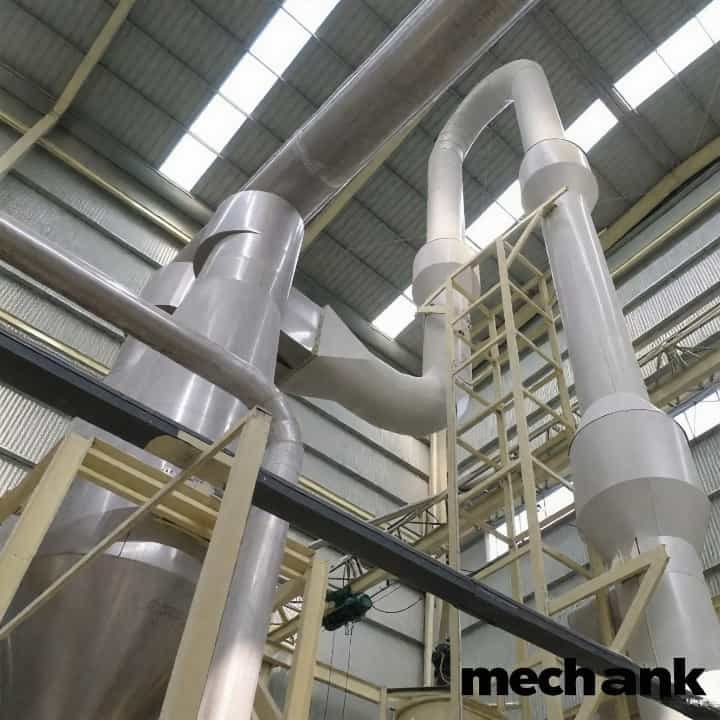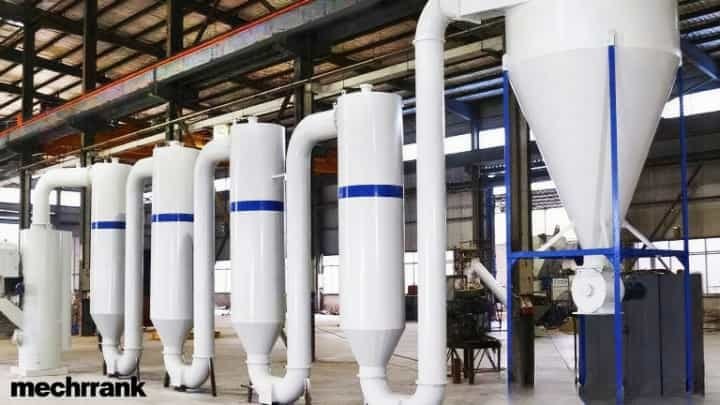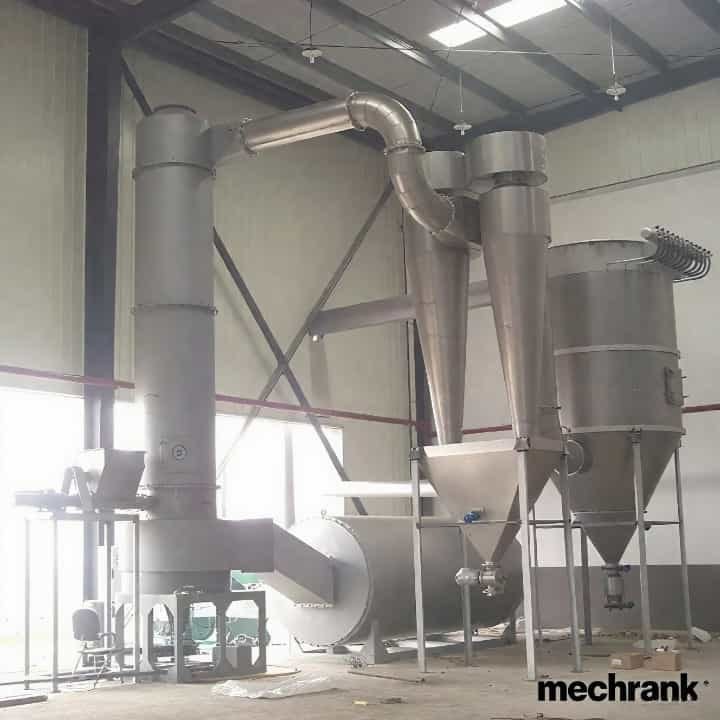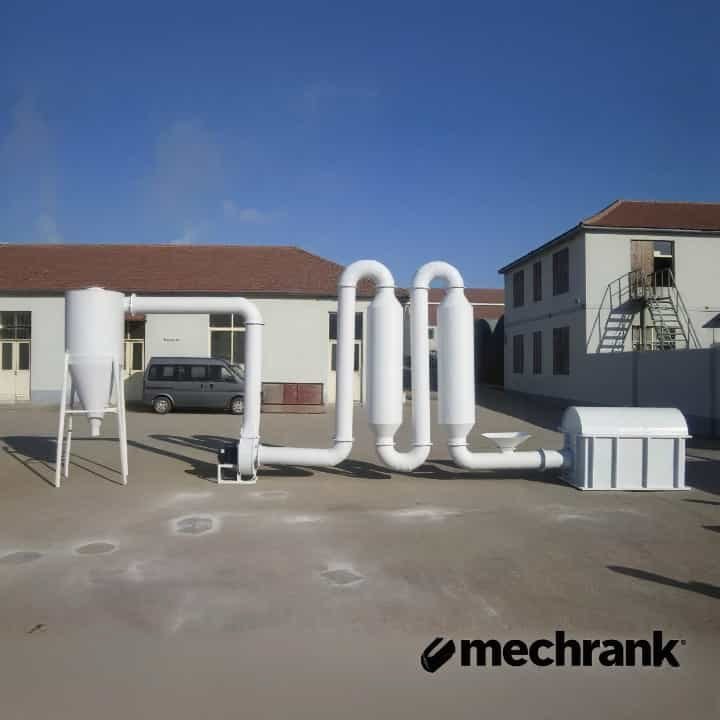An airflow dryer uses moving air to take away moisture from things or from the air. People use this technology in homes and factories. It uses heated or special air to dry things fast and evenly. Many beginners pick an airflow dryer because it saves energy. It is quiet and can dry many things like clothes or tools. This helpful device works well and is safe. It is a good choice for people new to drying solutions.
Key Takeaways
Airflow dryers blow warm air to dry things fast and evenly. This saves energy and makes little noise. Good airflow is important. Fast air dries the outside first. Slower air helps dry the inside. This makes drying safer and better. Clean lint filters and vents often. This stops blockages and lowers fire danger. It also helps the dryer work well. Use short, straight metal vents for better airflow. This uses less energy and stops problems. It helps avoid long drying times or sensor alerts. Airflow dryers are used at home and in factories. They dry clothes, food, wood chips, and biomass. This makes them useful for many drying jobs.
What Is an Airflow Dryer?
An airflow dryer is a device used to reduce the moisture content of materials by using high-speed hot air. It is commonly used in industries such as agriculture, food processing, and pharmaceuticals to ensure product quality and extend shelf life.
What Is an Airflow Dryer
An airflow dryer is a machine that blows air to dry things. It pushes air around or through materials to take out moisture. Experts say airflow dryers use moving air to dry things fast and well. This is different from refrigerated air dryers, which use cold to remove water. Airflow dryers use warm or room air and blow it over the material. This makes drying faster and saves energy. The system moves and reuses hot air to help save power and dry better. This way, it controls drying and keeps energy use low.
There are many kinds and sizes of air flow dryers. Some are small for home use, and some are big for factories. For example, a sawdust air flow dryer dries wood sawdust and other small things. These machines can dry sawdust, grains, food, and plastics. Airflow dryers are important for drying biomass materials. They help industries dry lots of product at once.
Main Uses
Airflow dryers are used in homes and factories. They dry many things, like food and wood chips. The table below lists dryer types and what they dry:
Dryer System Type | Materials Processed | Typical Industrial Applications |
|---|---|---|
Bin Dryer Systems | Bamboo, fruit, grain, vegetables, wood | Agricultural and forestry product drying |
Flash Dryer Systems | Food products, wood | Food production, wood processing |
Cereals, grains, granular or powdered materials | Grain and cereal crop drying | |
Media Slurry Dryer | Abrasives, ferrite, metal powders, talc | Drying highly viscous slurries |
Animal feed, drying salts, grains, minerals, nuts | Granular material drying in various industries |
Air flow dryers are great for drying biomass like sawdust, rice husk, and wood chips. These things must be dry before using them for energy or making things. The sawdust air flow dryer is common in the biomass energy field. It can dry lots of small, wet pieces at once.
Tip: Good airflow spreads heat evenly and stops wet spots. Good air movement makes drying faster and uses less energy.
Airflow is very important in drying. It brings dry air to the material and takes away wet air. This helps remove water from the outside and inside. For example, when drying food or wood, the airflow dryer keeps the heat steady and stops hot spots. This makes drying more dependable and keeps the product good.
How Air Flow Dryer Works
An air flow dryer operates by blowing hot air through a material to remove moisture quickly and efficiently. The process involves several key steps that ensure effective drying.

Key Components
Every airflow dryer has a few main parts. Each part helps move air and take out moisture. The most common parts are:
Blower or Fan: This part pushes hot air through the dryer. It spreads air so everything dries at the same time.
Heater: The heater makes the air warm before it goes in. Warm air can hold more water, so drying is faster.
Ventilation Ducts: These ducts move air through the dryer and take out wet air. Good ducts keep air moving and stop clogs.
Filters and Lint Traps: These catch lint and dirt. Clean filters help air move well and keep things safe.
Control Panel: This lets you set the heat, time, and air speed. It helps you dry different things the right way.
Tip: Use metal ducts and do not make sharp turns or let the vent sag. This helps air move better and keeps things safe. Use metal tape and special connectors to stop leaks and keep the dryer working well.
Operation Steps
The airflow dryer dries things in a few steps. Each step helps take out water and get the right dryness.
Loading the Dryer
Put wet things inside the dryer. Use the control panel to set the heat and air speed.Air Heating
The heater warms the air. The warm air goes into the dryer.Air Movement
The blower pushes hot air around the wet things. Air can move up and down or side to side. Up and down air dries things faster and more evenly. Side to side air may leave some spots wet.Moisture Removal
As air moves over the wet things, it picks up water. The air must move fast to swap wet air for dry air. At first, the air should move faster than 600 feet per minute. This helps dry the outside quickly.Adjusting Airflow
After the outside is dry, the air can slow down. Slower air, less than 150 feet per minute, helps heat go inside. This helps dry the inside faster.Exhaust and Ventilation
Wet air leaves through the ducts. Short, straight ducts help air move well. Lint traps and filters catch dirt and stop clogs or fires.Finishing Up
The dryer keeps going until things are dry enough. The control panel may tell you when it is done.
Note: Most home dryers move 150-200 cubic feet of air each minute. Some big dryers can move 300. Factory dryers use about 1 cubic foot per pound each hour. Short vents and few bends help air move better. Lint can block air and cause fires, so clean often.
The blower, heater, and ducts all change how well the dryer works. A strong blower spreads heat and dries things faster. Clean heaters work better. Good ducts help save energy. Some dryers use extra fans or controls to save power and work better.
How fast and which way the air moves is important. Fast air dries the outside. Slow air later helps heat go inside. Balancing air, heat, and water makes drying better and keeps things safe.
How Does Airflow Affect Dryer Efficiency?
Airflow significantly impacts dryer efficiency by ensuring effective moisture removal from clothes. Proper airflow allows for quicker drying times, reduces energy consumption, and prevents overheating. Inadequate airflow can lead to longer drying cycles and potential damage to the dryer.

Airflow Rate
Dryer airflow plays a big role in how fast and well a dryer works. The airflow rate, measured in cubic feet per minute (CFM), tells how much air moves through the dryer each minute. When the airflow rate goes up, drying time usually goes down. More air moves over the wet material, so water leaves faster. High airflow rates help reach the final moisture level more quickly. For example, high-speed dryers can use 50 to 100 CFM per bushel, which dries things much faster than deep-bed systems that use only 1.25 to 2.5 CFM per bushel.
However, higher airflow rates can also mean more energy use. The fan must work harder to push air through, especially if the dryer holds a lot of material. This can raise energy costs and make the system less efficient if not managed well. Some systems use layer drying, which dries smaller amounts at a time. This method can cut drying time and energy use by up to 35%. Finding the right balance between airflow rate and energy use is key for good dryer efficiency.
Note: If the airflow rate is too low, drying takes longer and may not remove enough water. If it is too high, energy use goes up and the fan may struggle with back pressure.
Airflow Efficiency Factors
Many things affect airflow efficiency in a dryer. Good venting helps air move out fast and keeps dryer airflow strong. Poor vent design, long ducts, or too many bends can slow air and lower exhaust performance. Back pressure builds up when air cannot move out easily. This makes the dryer work harder and can cause longer drying times.
Key factors for airflow efficiency include:
Use rigid metal ducts for best airflow and safety.
Keep vent runs short and straight. Each 90° bend adds resistance, like adding 10 feet of duct.
Use the right duct size. Small ducts increase back pressure and lower dryer efficiency.
Seal all duct joints to stop leaks.
Clean vents and lint traps often to prevent clogs and fire risks.
Install vent covers that block pests but do not block air.
Regular airflow checks and maintenance are important. Lint buildup, long vents, or blocked ducts can slow dryer airflow and raise energy bills. Signs of trouble include longer drying times, burning smells, or the dryer shutting off early. Cleaning vents every year keeps airflow strong and helps the dryer last longer. Well-maintained dryers dry faster, use less energy, and stay safe.
What Are the Applications and Safety Considerations?
Applications of technology span multiple fields, including healthcare, manufacturing, and finance. It is used to improve efficiency, accuracy, and decision-making processes.

Common Applications
Airflow dryers are used in many places. They help dry things fast and save energy. In the biomass industry, workers use them to dry sawdust, rice husk, wood shavings, and wood chips. These pieces are usually very small, less than 3mm wide and 5mm long. Drying at high heat, about 180°C, gets them ready for fuel, briquettes, or pellets. In wood processing, airflow dryers get sawdust ready for making charcoal. The steps are crushing wood, drying it, pressing it into briquettes, and then turning them into charcoal.
Food makers also use airflow dryers. They dry fruits, vegetables, herbs, and grains. This keeps food fresh longer and stops it from going bad. At home, people use airflow dryers for laundry. They take water out of clothes and sheets, which makes chores easier.
Industry | Common Uses |
|---|---|
Biomass | |
Food Production | Drying fruits, vegetables, grains, herbs |
Wood Processing | Preparing sawdust for charcoal and wood products |
Home/Laundry | Drying clothes and linens |
Airflow dryers help turn wet biomass into good fuel for power plants and green energy.
Safety Tips
It is very important to be safe with airflow dryers. Lint buildup is the main reason for dryer fires. Lint can burn easily if it gets too hot. Blocked vents stop hot air and water from leaving. This can hurt the dryer and make fires more likely. Flexible plastic ducts can trap lint and bend, so they are not safe. The best vents are made from hard metal with smooth insides.
To stay safe, people should:
Check and clean the vent and exhaust ducts often.
Do not put too much in the dryer or dry things with flammable stains.
Use only safe vent materials and keep vents short and straight.
Many new dryers have airflow sensors. These sensors find blocked vents and show warning codes like “AF.” If you see a warning, check for lint or blockages. You can test airflow yourself. Take off the vent and run the dryer. If the air feels hotter without the vent, the vent might be blocked. Some brands sell vent test kits for better checks.
Cleaning and good venting stop most dryer fires. The National Fire Protection Association says not cleaning lint causes about one-third of dryer fires each year.
How Do You Maintain an Airflow Dryer?
Maintaining an airflow dryer involves regular cleaning, inspection, and part replacement. These steps ensure optimal performance and longevity.

Cleaning and Upkeep
Regular cleaning keeps an airflow dryer safe and efficient. Lint and debris can block airflow and raise fire risks. The lint trap should be emptied after every load. This simple step helps air move freely and prevents buildup.
Dryer vents and ducts need cleaning, too. Most experts recommend cleaning vents every 1 to 3 years. The right interval depends on how often the dryer runs, the vent length, and if pets live in the home. Heavy use or long vents may need cleaning every 6 to 9 months. The U.S. Fire Administration suggests cleaning dryer vents at least once a year. If the dryer has never been cleaned or it has been over a year, a professional cleaning is a good idea.
Tip: Always follow the manufacturer’s cleaning schedule. Some brands require yearly cleaning to keep the warranty valid.
A clean vent system helps the dryer work better and last longer. Regular checks for lint around the door seal and vent area also help spot problems early.
Recommended Cleaning Intervals:
Empty lint trap after every load
Clean dryer vents every 1–3 years (more often with heavy use)
Schedule professional cleaning if it has been over a year
Troubleshooting
Airflow dryers sometimes show signs of trouble. Common issues include restricted airflow, sensor warnings, and reduced efficiency. Users can solve many problems with simple steps.
Troubleshooting Steps:
Inspect and clean the exhaust vent and duct with a vacuum or brush.
Check the vent system for blockages, including the outside vent hood.
Make sure the vent hose is not kinked or too long.
Avoid overloading the dryer.
If a sensor warning appears, run a diagnostic or reset the sensor. Replace it if needed.
Signs of reduced efficiency include longer drying times, damp clothes, burning smells, or hot dryer surfaces. Unusual noises or moldy smells also point to airflow problems. Regular cleaning and inspection fix most issues. If problems continue, a trained technician should check the dryer.
Note: Keeping vents clear and the dryer clean helps prevent fires and keeps drying times short.
People new to airflow dryers should learn about four things: temperature, dewpoint, drying time, and airflow. Airflow pushes warm air through things and takes away water fast. Watching the temperature and airflow helps stop uneven drying and saves power. Cleaning and taking care of the dryer often keeps it safe and working well. How the system is built and controlled changes how much energy it uses, not just how fast the air moves.
If you have special drying needs or problems that keep happening, you can ask an expert for help. There are many guides and videos with more tips if you want to learn extra.
FAQ
How often should someone clean the lint filter in an airflow dryer?
People should clean the lint filter after every load. This step helps air move well and keeps the dryer safe. Clean filters also help clothes dry faster.
What signs show that an airflow dryer has poor airflow?
Longer drying times, damp clothes, or a hot dryer surface can show poor airflow. Some dryers display warning codes like “AF.” Burning smells or lint around the vent also signal problems.
Can airflow dryers dry all types of materials?
Airflow dryers work best for small, loose items like sawdust, grains, or clothes. Large, thick items may not dry evenly. Always check the manufacturer’s guide for safe materials.
Why does vent length matter for airflow dryers?
Short, straight vents help air move out quickly. Long or bent vents slow airflow and can cause clogs. Good vent design keeps the dryer efficient and safe.
What should someone do if the dryer shows a sensor warning?
First, clean the lint filter and vent. Check for blockages in the duct. If the warning stays, reset the sensor or call a technician. Regular cleaning often fixes sensor issues.

